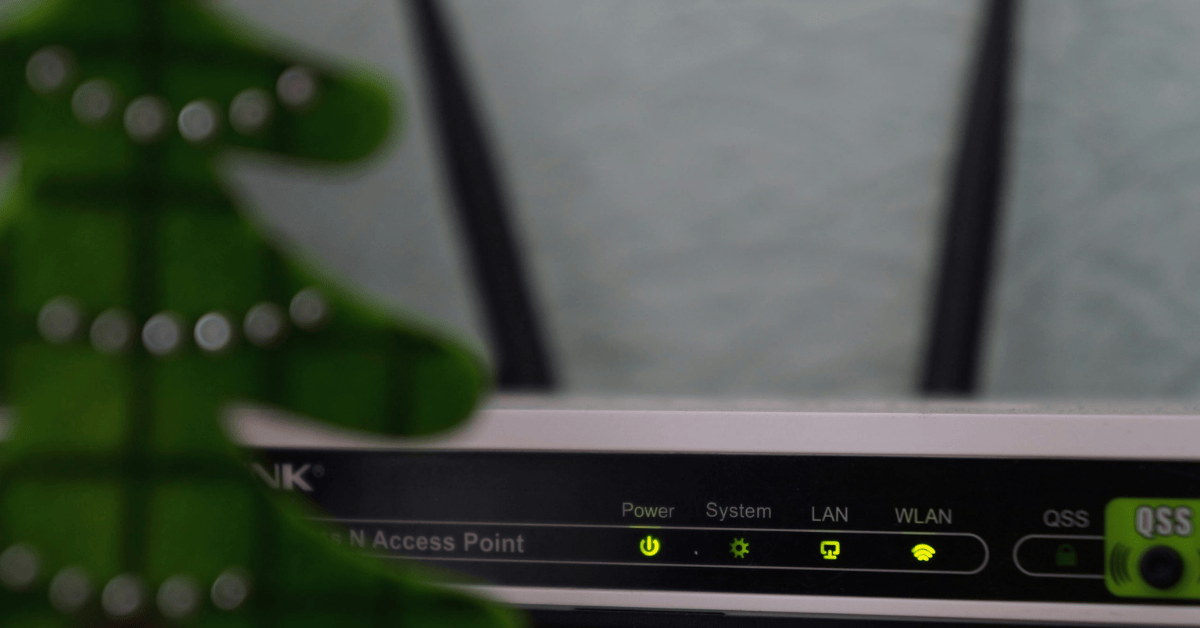What’s the Best Place for a Router in Your New Home?

Your boxes are unpacked, your furniture is in place and your internet connection is ready to go. It’s time to plug in your router and get connected again! But, have you thought about where you’re going to place your router? It turns out, your router placement, in addition to some other factors, makes a difference in Wi-Fi signal strength. The last thing you want is constant buffering while you’re having a binge session of your favorite show, so consider these tips for choosing a router location in your new home.
Central is the Best Place to Start
To begin your router placement journey, start in a central location. For most people, it’s the living room, dining room or family room. It may even be a centrally located bedroom. Now, determine the center-most corner or wall in that room. That is usually the best place for your router because Wi-Fi signals disperse outward at 360 degrees. The center-most corner in your home’s most centered room will often disperse evenly to all corners of the house.
Avoid Obstructions
If you’ve found the general area where you want to keep your router, it’s time to start considering its immediate surroundings. Certain things like water, metal or even mirrors can block or disrupt the signal. Try keeping items made of these materials away from the router if possible. You may also want to consider how much foot traffic that area will be receiving – humans are mostly water, so your router may have trouble sending a strong signal through your home’s occupants and guests.
Consider Your Walls
In addition to metal and water, radio waves have a more difficult time traveling through walls made from thick materials like brick, stone or concrete. This shouldn’t cause too much of a concern, as most modern homes are constructed with wood and drywall. However, for those who have a historic or retro brick home – of which Boston has plenty – it’s something to consider. It could be the difference between constant buffering and a clear, unimpeded signal.
The Kitchen is a No-Go
There are two reasons routers and kitchens don’t mix. Primarily, it’s because kitchens often house a lot of metal objects, like appliances, pots and pans. As mentioned previously, metal is a known radio wave disrupter. Also, kitchens are usually where the microwave is found. Not only are microwaves often comprised of metal parts, but they also function on a 2.4 GHz frequency – the same as your router.1 When you heat your leftovers, it will interfere with your Wi-Fi signal.
Higher is Better
Radio waves travel out and down, which is why radio towers are, well, towers. Since Wi-Fi signals are essentially radio waves, your router should be given the same treatment. Placing it on top of a shelf or bookcase is usually a solid option. If you don’t have a piece of furniture like that in the room, you could consider installing a floating shelf or mounting the router high off the floor. This is especially helpful for providing a strong signal in two-story homes.
Don’t Overlook Antenna Position
If you’ve ever owned a TV with old-school bunny ears, then you already know that antenna angles play a big role in signal clarity. It’s a bit more difficult to find a strong signal playing with your router’s antennas than it is with a TV, so instead, consider these general rules of thumb:
- To spread the signal horizontally, set the antenna vertically
- To spread the signal vertically, like between floors, set the antenna horizontally
- If you don’t have an antenna on your router, just make sure that it’s standing upright
Need a Helping Hand Getting Set Up?
If you’re in the early stages of planning a move, router placement is probably the last thing on your mind. You’re likely more focused on the essentials, like gathering boxes and tape, packing and figuring out the logistics of how you’re going to get from point A to point B.
The Armstrong Company can take the stress and guess work out of a residential move – big or small. We provide packing, moving and other convenient services so you can focus on the little things. Contact us for a free residential moving quote!
Are you ready for your next relaxing moving experience? If you’re moving soon, give our team a call today and let’s get started!
